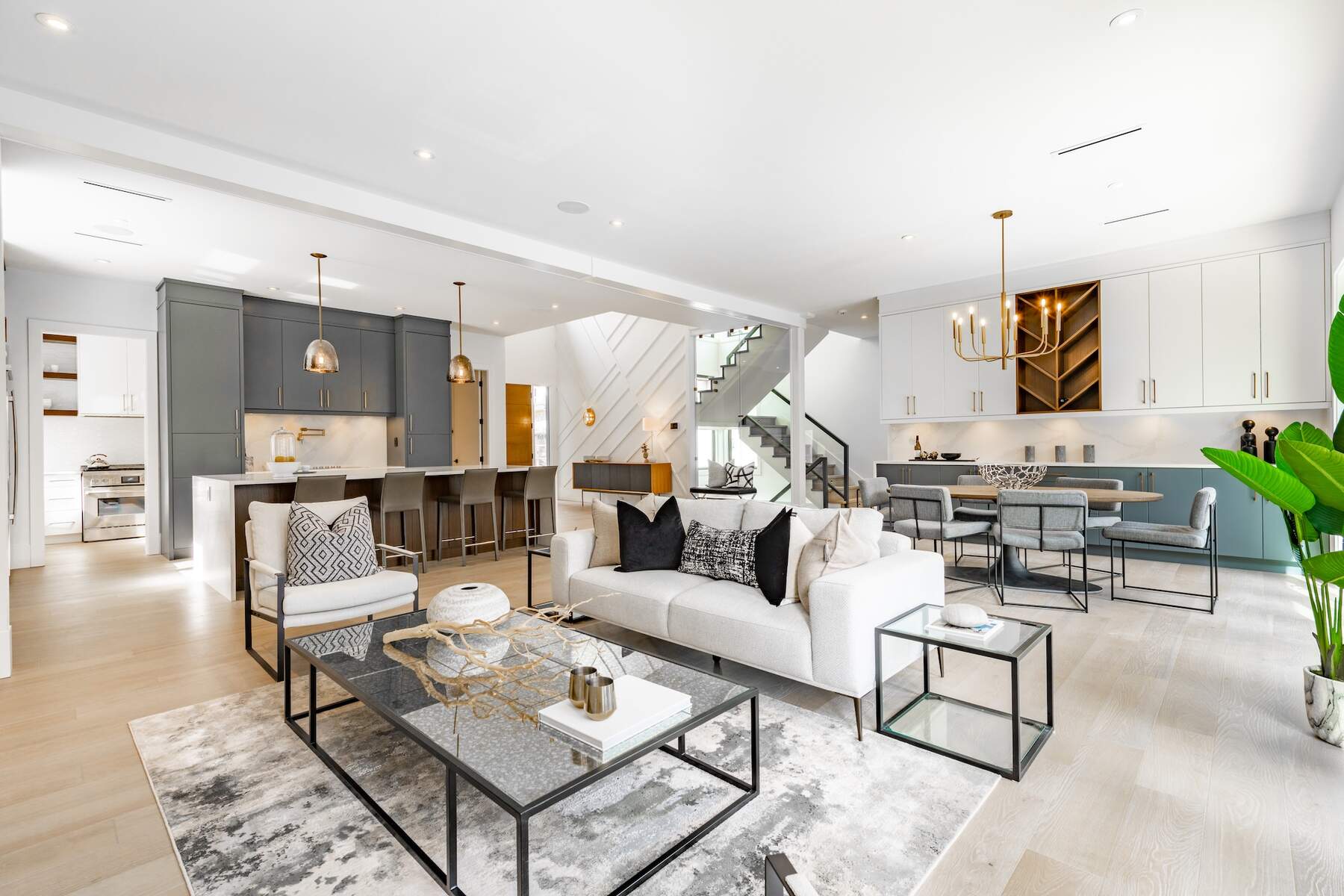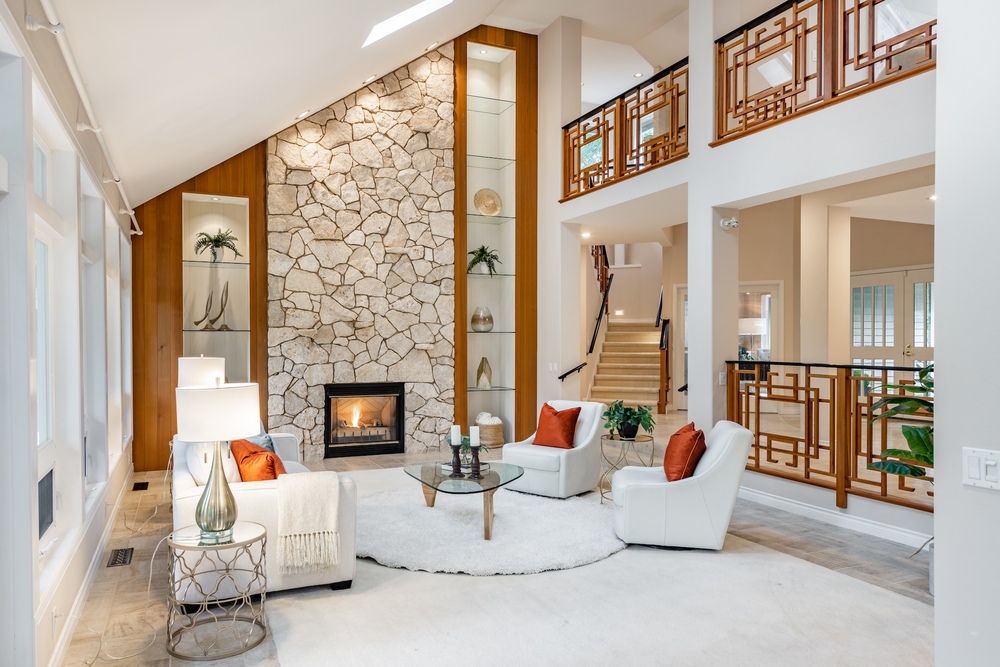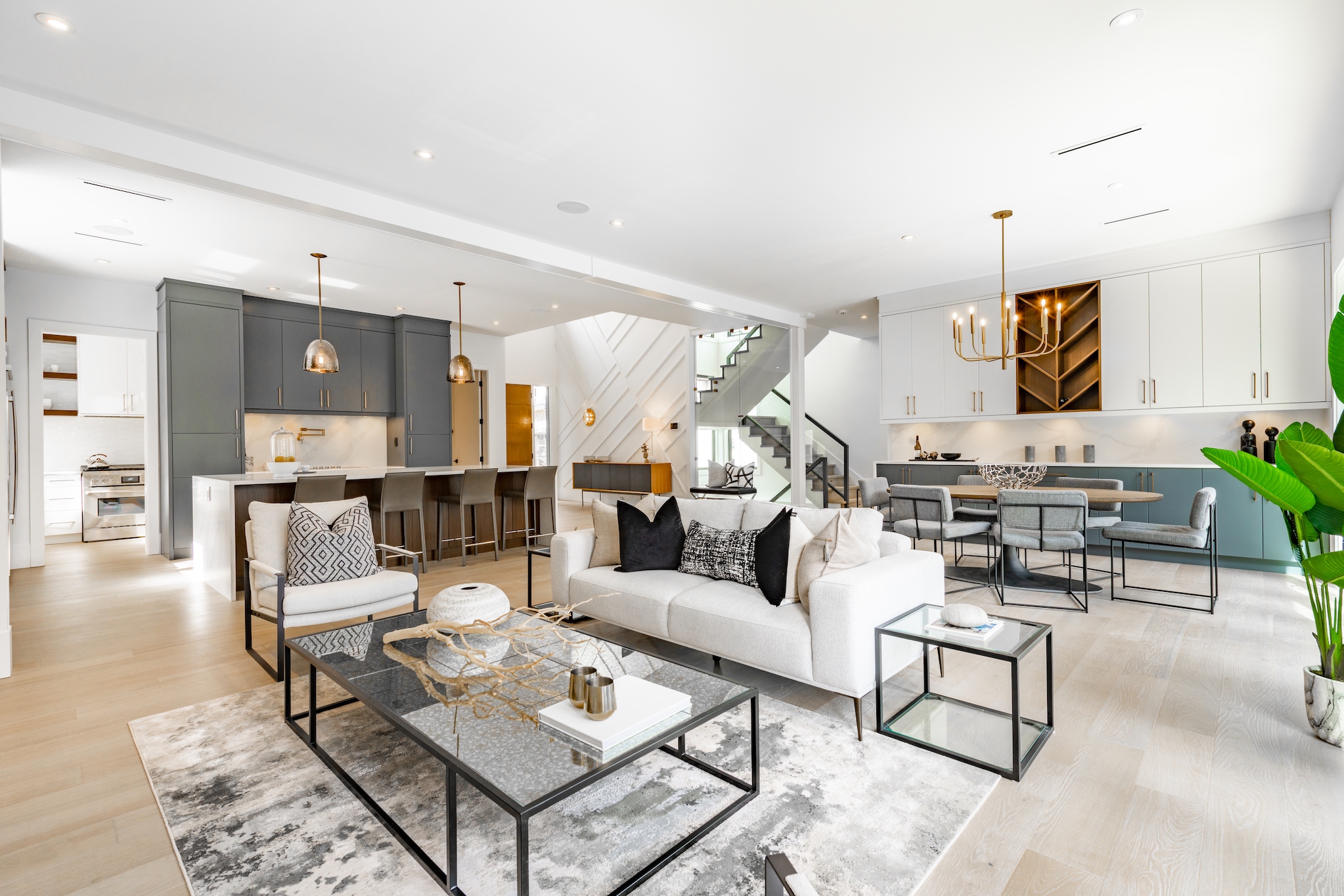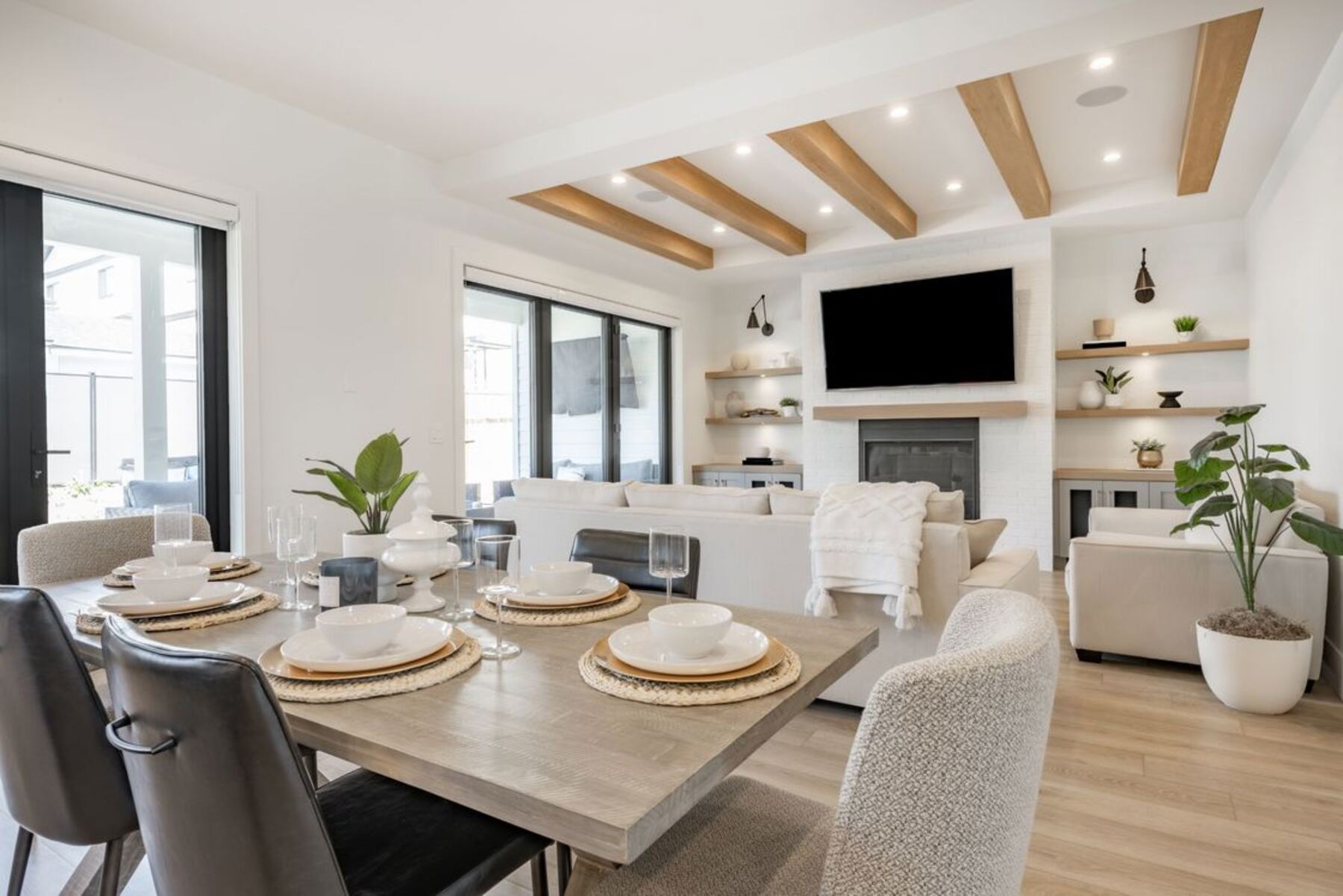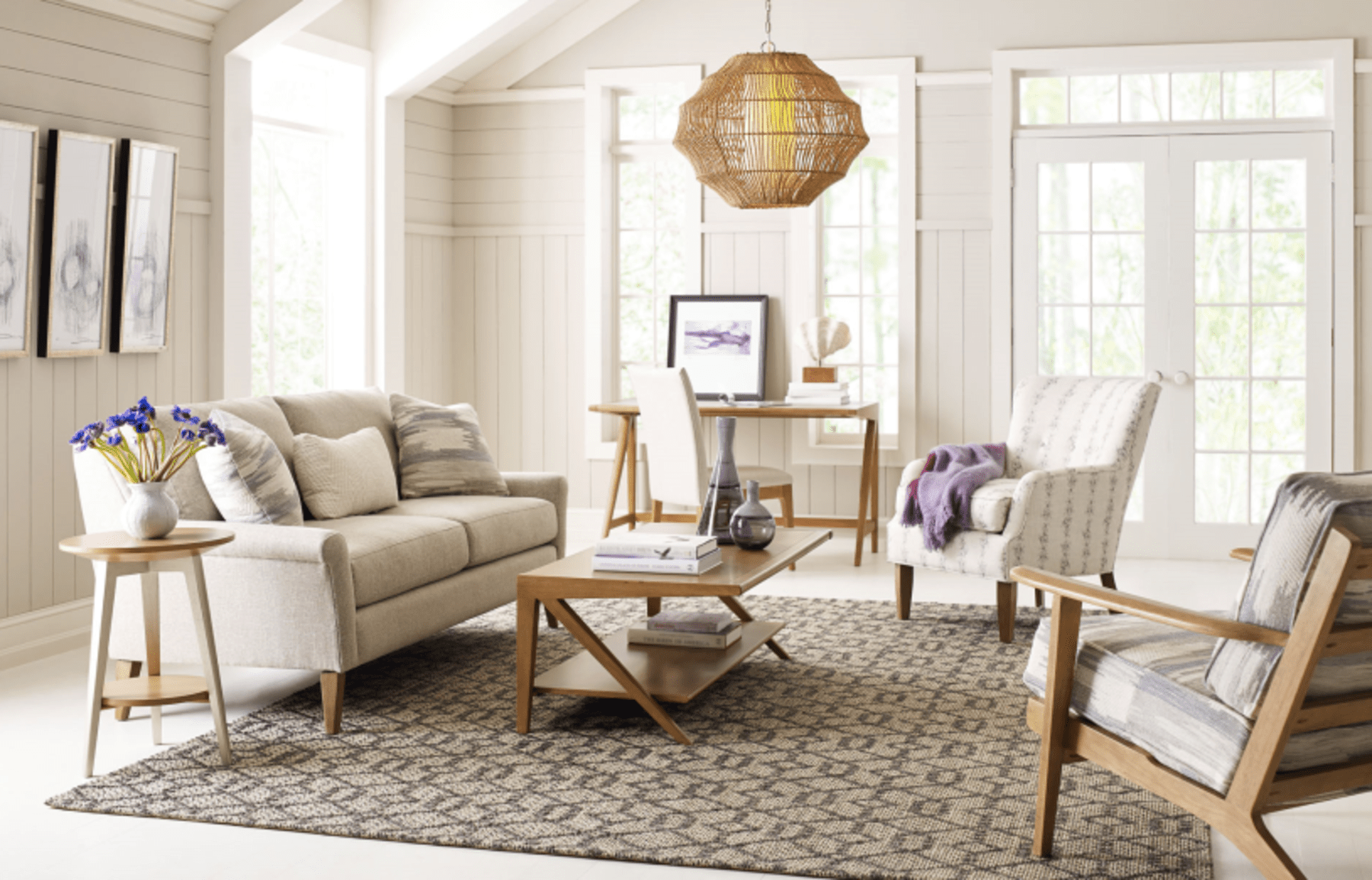Our overarching design specialty serving Vancouver, BC is West Coast contemporary style and its many iterations such as organic modern style and California Modern.
If this style is for you, contact us. We offer a complimentary in-home visit where we’ll come to you and discuss precisely what you’d like for you home.
If you’re not certain what the West Coast contemporary design style, here’s our guide on it peppered with photo examples.
West Coast Contemporary Design Style Explained: A Concise Guide
West Coast Contemporary design style is a popular choice for design enthusiasts who appreciate the harmonious blend of natural elements and modern sophistication. Originating in the mid-20th century, this design style has evolved to embody the casual, laid-back lifestyle that is often associated with the Western United States coastline. By incorporating the beauty of the outdoors with the latest trends and materials, West Coast Contemporary offers a fresh take on contemporary living spaces.
The cornerstone of this design aesthetic lies in the seamless integration of indoor and outdoor spaces. West Coast Contemporary homes are characterized by open floor plans, expansive windows, and a focus on natural light. The use of natural materials, such as wood and stone, ties the design to its surrounding landscape and adds an element of warmth and durability. Clean lines and minimalistic features create a sense of calm, while diverse textures add depth and interest to the overall design.
In addition to its visual appeal, West Coast Contemporary design is also known for its emphasis on sustainability and eco-friendliness. Energy efficiency is paramount in these designs, with features like green roofs, solar panels, and energy-efficient windows becoming increasingly common. Embracing the beauty of nature and minimizing environmental impact, it’s no wonder that this design style continues to gain popularity and influence in the world of architecture and interior design.
West Coast Contemporary Design Style Origins
Influence of Frank Lloyd Wright
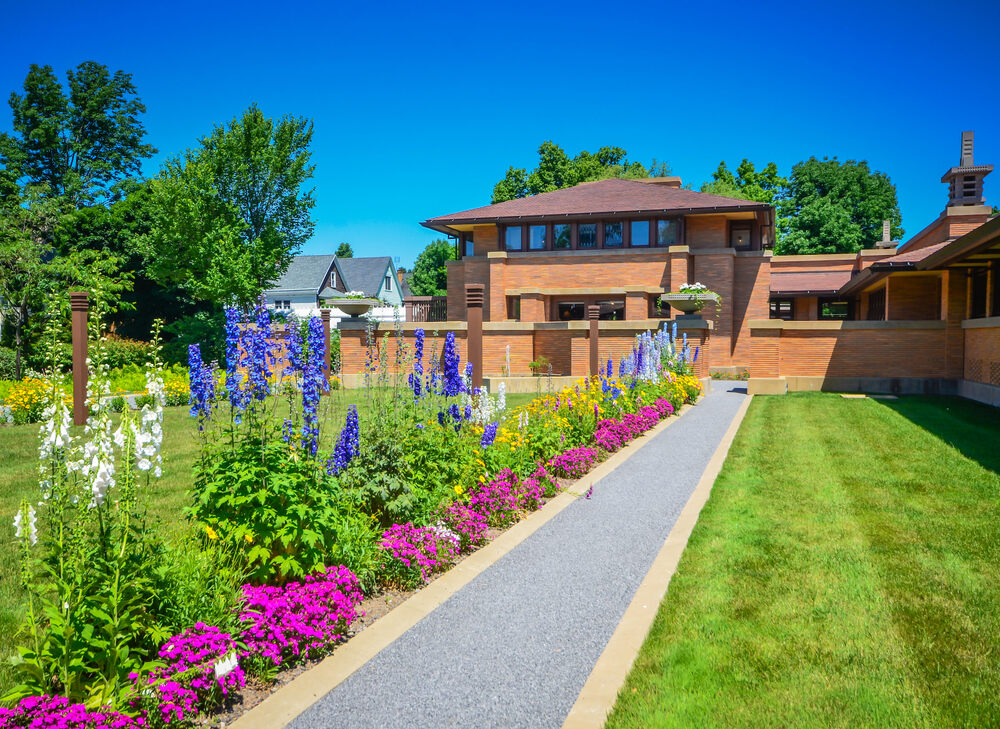
Above photo: The Darwin D. Martin House Complex, also known as the Darwin Martin House National Historic Landmark, was designed by Frank Lloyd Wright and built between 1903 and 1905.
West Coast Contemporary design style has its roots in the modernist architectural movement of the early 20th century. One of the key influences was Frank Lloyd Wright, who emphasized the importance of designing spaces in harmony with the surrounding environment. His organic architecture principles laid the foundation for the West Coast Modernism movement, which embraced nature and utilized locally sourced materials in construction.
Ron Thom’s Vision
Ron Thom, a Canadian architect known for his work in West Coast Modernism, played a significant role in shaping the style. His vision was centered around creating structures that integrated seamlessly with their natural surroundings. Using simple forms, minimal ornamentation, and large windows, Thom’s projects showcased the beauty of the local landscape and fostered a strong connection between indoor and outdoor spaces.
International Style
The International Style also contributed to the development of West Coast Contemporary design. This architectural movement gained popularity in the 1930s and focused on functional simplicity, clean lines, and minimal ornamentation. Key features of the International Style include open floor plans, large windows, and geometric shapes, all of which can also be found in West Coast Contemporary design.
UBC and Notable Architects
Not surprisingly, this style has roots in Vancouver, BC.
The University of British Columbia (UBC) played a vital role in the growth and popularization of the West Coast Contemporary design style. Notable Canadian architects such as Arthur Erickson, Fred Hollingsworth, Barry Vance Downs, and Kenneth Gardner were instrumental in furthering the movement through their work. Their projects at UBC and the surrounding area demonstrated how the design style could celebrate and showcase the breathtaking landscapes found along the West Coast.
These architects skillfully combined elements from Frank Lloyd Wright’s organic architecture, Ron Thom’s vision, and the International Style to create a unique architectural language that is now synonymous with West Coast Contemporary design. This style continues to be a popular choice for residential and commercial spaces, due in part to its emphasis on connecting with nature and its timeless aesthetic qualities.
Defining Features of West Coast Contemporary Design
Emphasis on Natural Elements and Materials
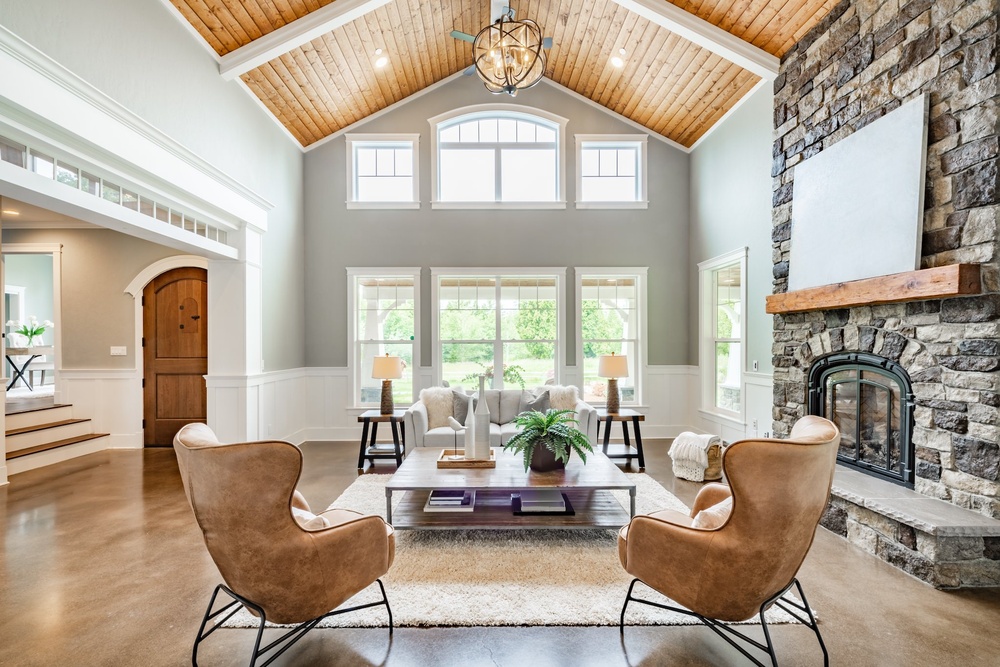
West Coast Contemporary design is an architectural style that emphasizes the use of natural elements and materials. Wood, particularly cedar, is a common choice for exteriors, while stone is often used for feature walls and fireplaces. By incorporating these natural textures into the structure, designers create a strong connection to the environment and blend the home with its surroundings.
Open Floor Plans and Indoor-Outdoor Living
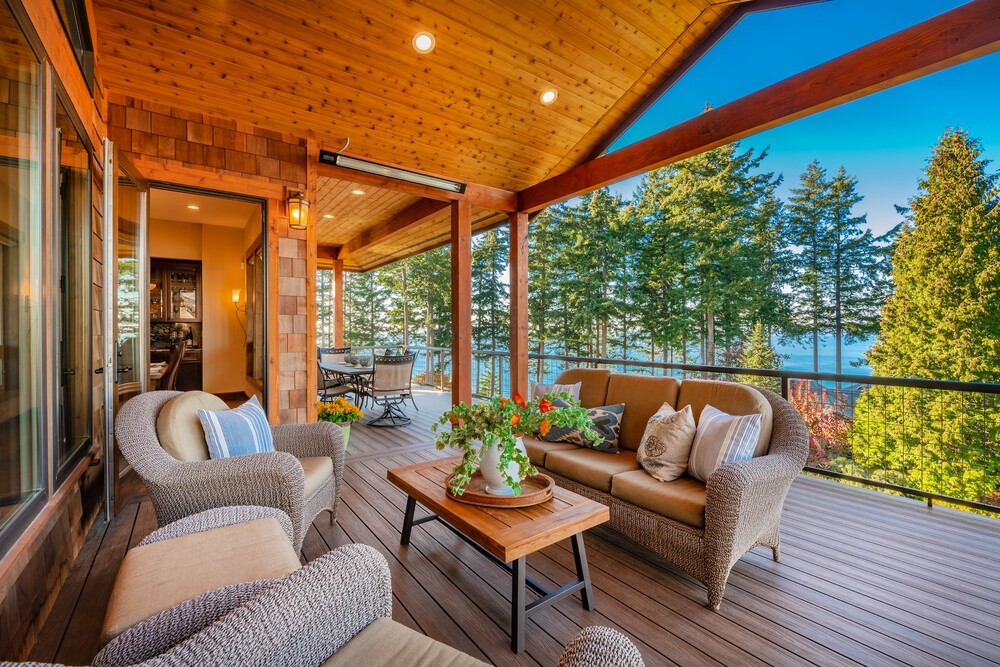
A key aspect of West Coast Contemporary design is its focus on open floor plans, which allows for a seamless flow between various areas of the home. These spacious layouts promote a sense of togetherness and provide ample space for entertaining.
Indoor-outdoor living is another core tenet of this design style, achieved through the use of patios, decks, and balconies that extend the living space to the outdoors. By blurring the boundaries between indoor and outdoor spaces, West Coast Contemporary homes offer a more relaxed and welcoming atmosphere year-round.
Large Windows and Natural Light
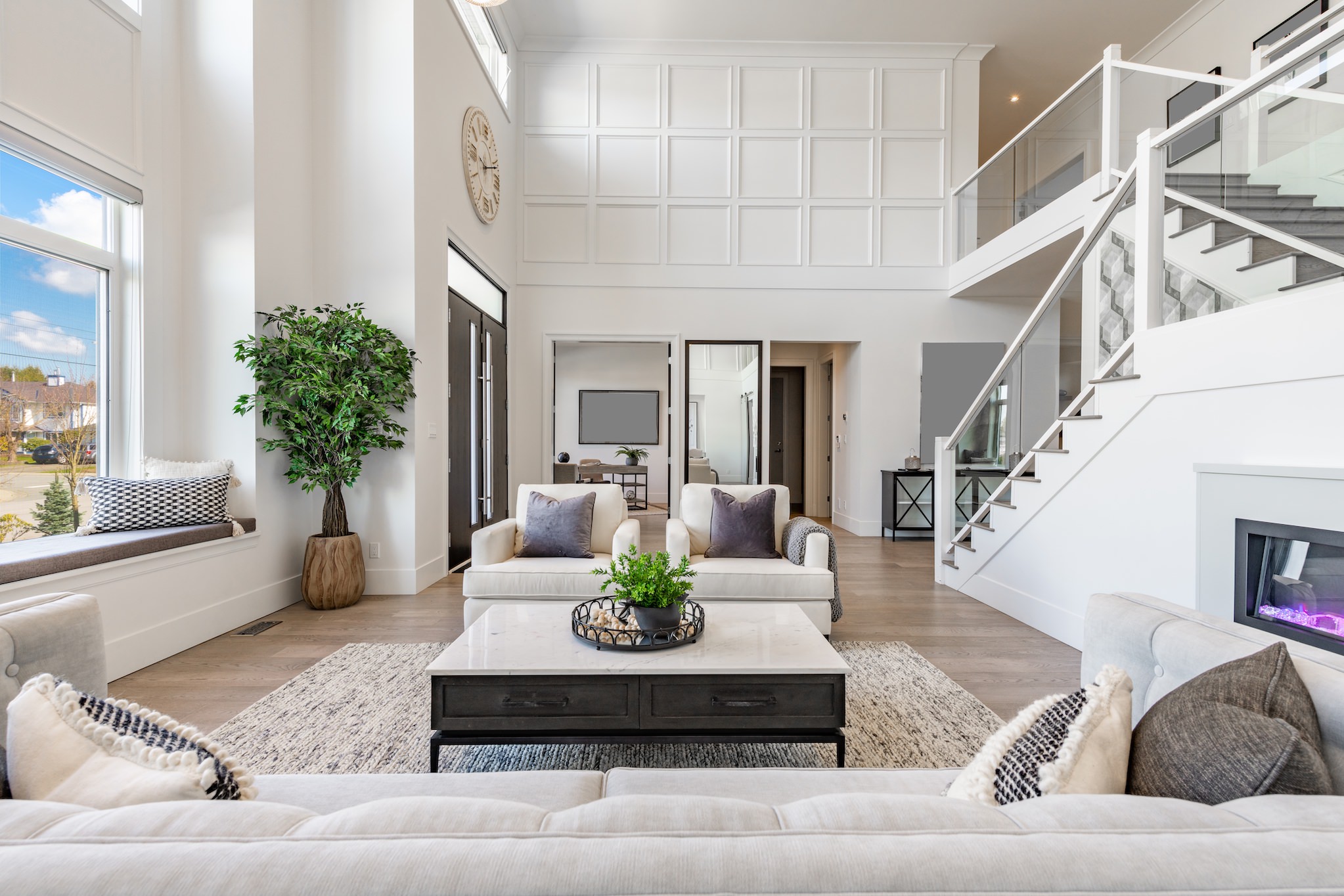
Another defining feature of West Coast Contemporary design is the use of large windows and glazing to maximize natural light. Floor-to-ceiling windows and skylights are common, taking advantage of the sunlight to create a bright and inviting space. By incorporating these elements into the architecture, designers connect the interior to the stunning landscapes commonly found along the West Coast.
Contrast and Clean Lines
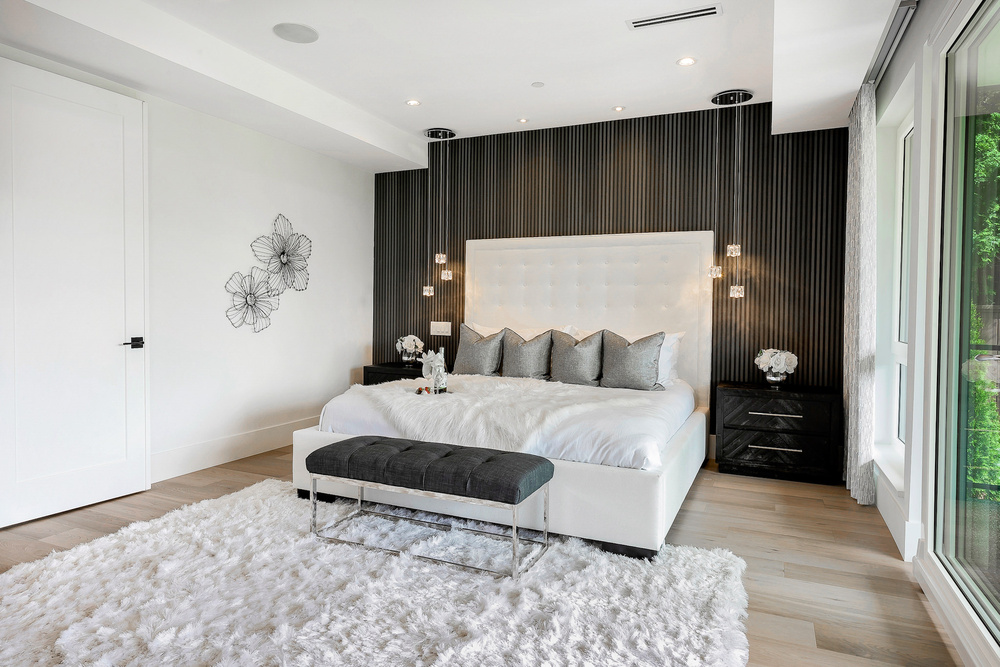
Contrast and clean lines are essential to the West Coast Contemporary design style. Sharp angles, flat roofs, and broad overhangs create a striking visual impact and emphasize the connection between the home and its natural surroundings. The use of bold lines and contrasting materials gives the style its distinctive, modern appearance while still maintaining a warm and inviting atmosphere.
The West Coast Contemporary design style showcases a harmonious blend of natural elements, open spaces, and modernity. By highlighting the surrounding landscape and utilizing natural materials, architects have created a unique style that has become synonymous with the coastal regions of the western United States and Canada.
Incorporating West Coast Design into Home Decor
Modern vs Traditional Approach
West Coast Contemporary design is a fusion of modern and traditional styles, resulting in a comfortable and stylish space. In cities like Los Angeles, Seattle, and Vancouver, this design approach is prevalent, reflecting the region’s natural surroundings and easygoing lifestyle. To incorporate this style into your home decor, consider blending clean lines and modern elements with warm, earthy materials typically associated with traditional design. This balance between modern and traditional creates a welcoming, timeless atmosphere that embraces West Coast living.
Decorating with Colours and Textures
A vital aspect of West Coast design is the use of colour. Utilizing a palette mainly comprised of blues, whites, blacks, and greens allows for a seamless integration of natural elements, such as wood and stone, into the design. These colours evoke the ocean, forests, and mountains of the West Coast, further highlighting the connection between interior and exterior spaces. Layering textures is another signature element. Combining materials like wood, metal, and natural fibers creates depth and interest, making the space feel more inviting and dynamic.
Statement Pieces
Incorporating statement pieces into your West Coast Contemporary home is essential for creating a memorable and personalized space. These striking items, such as a bold piece of artwork, an oversized mirror, or a one-of-a-kind light fixture, can serve as focal points and conversation starters. As part of the design process, consider selecting statement pieces that reflect your personality and complement the other elements in the room.
Modern Rustic Touches
A defining characteristic of West Coast design is the infusion of modern rustic elements. This approach combines contemporary forms with raw, natural materials, resulting in a comfortable yet stylish aesthetic. Integrating modern rustic touches can be achieved using reclaimed wood, incorporating organic shapes inspired by nature, or displaying industrial-inspired lighting. These elements bring an earthy, grounded feel to the design, showcasing the essence of West Coast living.
By thoughtfully weaving together modern and traditional approaches, colours and textures, statement pieces, and modern rustic touches, you can effectively incorporate West Coast design into your home decor and create a uniquely inviting, comfortable, and visually appealing space.
Learn about other design styles here.
West Coast Contemporary FAQ
What are the key characteristics of West Coast contemporary design?
West Coast contemporary design is known for its simple, clean lines, open floor plans, and emphasis on natural light. Large windows, flat roofs, and the use of natural materials are common features. The design often incorporates outdoor living spaces to take advantage of the region’s mild climate.
How do nature and the environment influence West Coast contemporary style?
The natural beauty of the West Coast greatly influences the style, with an emphasis on integrating the home into its surroundings. Designers use materials that blend with the landscape, such as wood and stone, to create a seamless connection between indoor and outdoor spaces. The extensive use of glass encourages an appreciation for nature from within the home.
What materials are commonly used in West Coast contemporary homes?
Natural materials such as wood, stone, and glass are predominant in West Coast contemporary homes. Wood, often native to the region, is used for both structural and aesthetic purposes, including exposed beams and siding. Stone is commonly incorporated into designs for both interiors and exteriors, lending a sense of permanence and harmony with the surrounding environment.
What design principles guide West Coast contemporary architecture?
West Coast contemporary architecture is guided by principles such as sustainability, simplicity, and the integration of indoor and outdoor spaces. The emphasis on clean lines, open floor plans, and an abundance of natural light creates a sense of openness and connectivity with the landscape. Energy efficiency and eco-friendly materials are also important considerations for many architects and designers working in this style.
How do West Coast contemporary interiors differ from other contemporary designs?
While many contemporary designs can be characterized by minimalism and monochromatic color palettes, West Coast contemporary interiors often incorporate natural materials, textures, and colors that reflect the region’s landscape. Additionally, the frequent inclusion of outdoor living spaces creates a more fluid connection between interior and exterior environments, further differentiating West Coast contemporary interiors from other styles.
Which famous architects work in the West Coast contemporary style?
Several notable architects have contributed to the West Coast contemporary style, including Richard Neutra, John Lautner, and Charles and Ray Eames. These architects have helped shape the aesthetic, incorporating the region’s stunning natural surroundings and an appreciation for the indoor-outdoor connection into their iconic designs.




